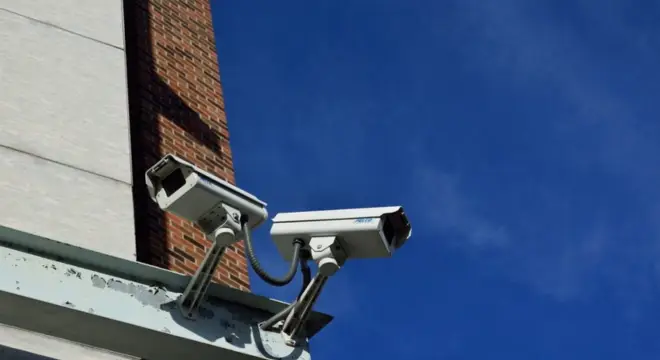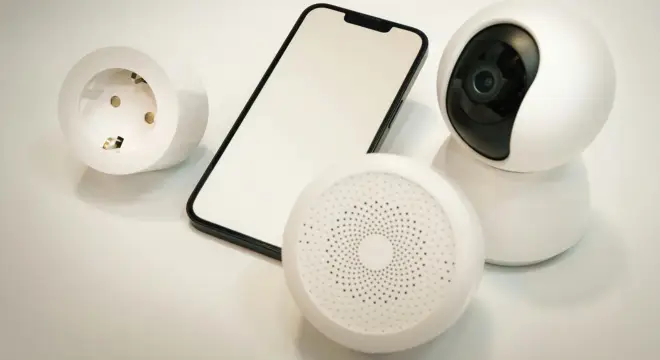11 Must-Know Security Measures to Protect Your Home From Intruders
If you think a locked door and a barking dog are enough to keep your home safe, I get it — that used to be true. But 2025 isn’t playing by old rules anymore. Burglars have adapted, and so should you. Today’s trespassers aren’t the stereotypical “midnight intruders.” Many of them watch your online habits, map your delivery routines, and even notice when your smart doorbell blinks red instead of blue.
That’s why home security today isn’t just about buying new tech — it’s about thinking smarter. I’ve spent years reviewing security systems and studying break-in reports, and one thing is crystal clear: most people don’t fail because they lack devices; they fail because they don’t use them intentionally. They install cameras but leave blind spots. They post vacation pictures in real time. They assume their neighborhood is “safe enough.”
According to FBI data, a burglary happens every 25 seconds in the U.S. Most of them occur in daylight, often when the homeowner is just out running errands. And even though smart security tech has become more affordable, only about half of homeowners actively use it. That gap — between what’s available and what’s actually practiced — is where burglars win.
So before we talk about motion lights, locks, or alarms, it’s worth asking yourself:
“Is my home really secure, or do I just feel secure because I bought the right gadgets?”
That’s the shift I want you to make — from feeling safe to being safe. In the next sections, I’ll walk you through strategies that don’t just sound smart on paper, but actually work in real homes like yours.
Your first takeaway? Security is no longer about building walls — it’s about building awareness.
What’s one habit you’ve never questioned about your home’s safety that might need rethinking now?
Strengthen First Impressions — Visibility Is Deterrence

I’ve learned one thing after years of studying home break-ins — burglars don’t like being seen. They don’t want attention, noise, or even the faint chance that someone’s watching. That means your best defense often starts outside your house.
Bright motion-activated lights and clear visibility are more powerful than most people think. When someone steps near your driveway or porch and a floodlight pops on, it’s not just about illumination — it’s psychology. That flash says, “You’ve been noticed.” And for a burglar, that’s often enough to make them walk away.
A CNET report highlighted this too, noting how modern motion sensors and smart floodlights can now distinguish between people and passing cars. That means you can light up only when it truly matters — no more false triggers or wasted energy. Combine those lights with cameras placed near your main entrances, and you’ve created a zone that instantly tells intruders, this home is paying attention.
But lighting is just half the story. Trim tall bushes, clear your porch corners, and add visible signs of security — even simple ones like window decals from legitimate systems (not those fake $3 ones). According to a University of North Carolina study, 83% of convicted burglars said they’d skip a home if they saw an alarm system warning.
Your takeaway? Don’t try to hide your security — show it off. Burglars can’t plan what they can’t predict.
Lockdown Layer 1 — Smart Entry Points That Don’t Fail
Here’s the uncomfortable truth: most burglars don’t “break in.” They just walk in — through unlocked or weak doors. If you’ve ever left for a quick errand thinking, “It’s just ten minutes,” that’s exactly the window intruders look for.
Start with your main door. A solid deadbolt matters, but so does the frame and strike plate — that’s what actually takes the force during a break-in. I’ve seen doors with expensive locks crumble because of a $2 strike plate. Reinforce it with long screws that bite into the wall studs, not just the door frame.
Now, layer smart tech on top of that foundation. Smart locks that auto-lock after a set time or send you alerts if left open are life savers. They’re not about convenience; they’re about removing human forgetfulness from the equation. I use one myself, and it’s surprising how often I’d have left my door unlocked without realizing it.
And don’t forget your doorbell camera. It’s your digital peephole, and burglars know it. When they see that little lens glowing, they know their face might end up on a police report — that’s instant deterrence.
If you do one thing today, make sure your front door is as secure as your Wi-Fi password — and locked just as consistently.
Windows & Secondary Access Points — The Silent Entry Risk
While everyone obsesses over the front door, most burglars prefer side windows, backdoors, or garage entries — the quiet corners where you rarely look.
I’ve read too many case studies where people spent thousands on cameras but left a side window cracked open “for fresh air.” Unfortunately, that’s exactly where burglars slip in.
Fit your windows with contact sensors or vibration alarms that send instant alerts to your phone. These aren’t fancy gadgets — they’re basic, affordable, and effective. You can also use shatter-resistant window film, which makes breaking glass noisy and time-consuming — two things burglars hate.
And don’t ignore small details: lock sliding glass doors, add a simple wooden rod to block the track, and install motion-based nightlights in hallways or staircases. It’s not about paranoia; it’s about smart layering.
If someone ever tries to get in, you’ll want them to feel like your home is fighting back before you even know it’s happening.
Layered Surveillance — Smart Cameras, Smarter Use

Cameras don’t prevent crime by themselves — how you use them does. I’ve visited countless homes where people proudly showed me their shiny new security cams, yet half were pointed at the sky or covered by plants. That’s not protection; that’s decoration.
Place your cameras strategically: front door, driveway, side gates, and backyard. Make sure they cover approach paths, not random corners. A camera that clearly shows faces — not just motion — is worth ten that capture shadows.
Also, use the features you’re paying for. Turn on human detection and activity zones so you only get real alerts. When your phone buzzes, you should want to check it, not ignore it. And when you get an alert, use the two-way audio. That quick “Hey, can I help you?” has scared off more trespassers than sirens ever did.
One more tip: let your cameras be visible. A camera in plain sight tells intruders they’re being watched, and that’s often enough to make them move on.
You don’t need a Hollywood setup — you just need cameras that tell the story clearly if something ever goes wrong.
Digital Awareness — Reduce Your Online Break-In Triggers
I’ll be honest — your biggest security risk might not be your locks; it’s your posts. Burglars don’t need to hack your system when you willingly tell them you’re “off for the weekend.”
Social media is an open invitation if you use it carelessly. I’ve seen real cases where thieves targeted homes after spotting travel posts or live stories showing empty living rooms. They know when you’re gone, what gadgets you own, even which entry points look easiest — because you’ve already shared them.
Here’s what I do: I never post about a trip until I’m back. I also turn off location tags and keep my smart-cam feed private (some people unknowingly share theirs publicly). And if you’re using smart lights or speakers, schedule them to turn on randomly in the evening. Let your home “pretend” you’re still there.
Security isn’t only physical anymore — it’s digital. Every time you post, ask yourself, “Would I still share this if I knew a stranger was watching?”
If this part hits close to home, you’ll want to read my deep dive on how burglars use social media to identify vulnerable houses — it’s eye-opening how much we give away without realizing it.
Neighborhood and Human Vigilance — The Power of Eyes, Not Just Apps
I’ll be real with you — no smart cam can replace a good neighbor. Cameras record events; people prevent them.
Before you head out on vacation or even a weekend away, tell one or two trusted neighbors. Give them a heads-up if you’re expecting deliveries. Most burglars admit they skip houses in alert, active neighborhoods.
Join your local community app — Nextdoor, Citizen, or even a simple WhatsApp group. These small networks often catch suspicious activity long before the police do. I’ve seen cases where a shared doorbell clip led to a suspect being caught within hours.
You can even link your doorbell cam to “shared neighborhood view” features, where neighbors can see clips if something unusual happens. It’s like crowd-sourced security — no cost, just awareness.
Your cameras might blink, but it’s the human eyes that make burglars nervous. So build that connection; it’s still your strongest defense.
Garage, Yard, and Outdoor Storage — The Most Ignored Zones

Most people don’t realize this: garages and backyards are like open invitations for burglars. They’re quiet, dark, and often loaded with tools — the same ones thieves can use to break in.
If you’re anything like most homeowners, you’ve probably left the garage door open “just for a few minutes.” I’ve done it too. But that’s how easy entries happen. One quick check, and the intruder’s inside.
Use a smart garage system that auto-closes after a set time and sends you a reminder if it’s left open. They’re simple but game-changing. Keep ladders and gardening tools locked away — they’re basically free burglary kits lying around.
And if package theft is a problem in your area, consider a delivery lock box. It doesn’t need to be fancy. Even a sturdy, code-locked bin can stop porch pirates cold.
The point is: treat your outdoors like part of your home, not an afterthought. Security starts at the boundary — not the door.
The Psychological Deterrent — Make Your Home “Feel” Hard to Crack
I’ve noticed burglars don’t choose homes randomly. They feel them out — looking for the ones that seem predictable, unguarded, or easy.
That’s why your home should always look active. Use smart lights with random timers so no one can guess your pattern. If your house looks the same every night, you’re giving them a schedule.
You can even use audio to your advantage — a low-volume TV or a recorded dog bark playing occasionally can trick an outsider’s instincts. They’re not trying to solve puzzles; they just want easy wins.
In a survey by the University of North Carolina, 60% of burglars said they avoid homes that appear occupied. That’s your edge.
Don’t just rely on locks and alarms — create uncertainty. Make your home unpredictable. Burglars don’t break into what they can’t understand.
A lot of homeowners still rely on old-school ideas of safety — but many of those beliefs are flat-out wrong. I broke some of them down in this myth-busting guide on home security misconceptions that might surprise you.
Professional Monitoring & Insurance Integration
Here’s a truth most homeowners learn the hard way: even the best DIY systems can fail if you’re asleep, traveling, or simply not checking your phone.
That’s where professional monitoring comes in. It’s not about paranoia — it’s about backup. Real people watching your alerts 24/7, ready to contact emergency responders when you can’t.
The good news? It’s not as pricey as people assume. Plans from brands start around $25–$30 a month — less than what most of us spend on coffee. And in many cases, insurance companies lower your premium when you have verified monitoring.
If you’re away often or live in a quiet area, this layer adds real peace of mind. It’s like having a security guard who never blinks.
Because safety isn’t just about installing things — it’s about maintaining awareness, even when you can’t.
Emergency Readiness — When Prevention Isn’t Enough

Even the best precautions can’t guarantee you’ll never face a break-in. That’s why I always tell people: prepare for the “what if.”
Have a clear plan — where you’ll go, who you’ll call, what you’ll do first. Don’t confront intruders; it’s never worth it. Instead, alert the authorities immediately and stay in a safe room or exit quietly if you can.
Keep emergency numbers saved — not just the police, but neighbors and relatives. And ensure your camera footage backs up to the cloud automatically. Physical evidence disappears; digital proof doesn’t.
After any incident, document everything. Take photos, file a report, and contact your insurance provider as soon as possible.
When things go wrong, calm and preparation matter more than courage. Remember — surviving safely is always the win.
If you’ve ever wondered what the safest actions are during an actual break-in, my step-by-step guide on what to do in a home invasion walks you through the right moves — calmly and effectively.
The Mindset Shift — From Feeling Safe to Being Safe
I’ve seen homes packed with smart gadgets that still got broken into — and simple, modest ones that stayed untouched. The difference isn’t the tech. It’s the mindset.
Security isn’t about fear; it’s about awareness. You don’t need to turn your home into a fortress. You just need to think one step ahead — before the problem arrives.
Start small: check your lighting, fix weak locks, talk to your neighbors, review your online habits. Every small action builds a layer. Together, they form a home that quietly says, “Not worth the risk.”
If you take one thing from everything I’ve said, let it be this: peace of mind isn’t bought — it’s built.
So tell me — if someone handed you a “security mirror” today, what’s the one weak spot you’d see in your home? And more importantly, what’s stopping you from fixing it right now?
Want to dig deeper into protecting your home from modern threats? Visit Build Like New
for expert-backed guides, real case studies, and practical home security tips that actually work.
Disclaimer: The information in this article is for general awareness and educational purposes only. It should not replace professional security or legal advice. Always consult certified home security experts before making major safety or system decisions.


